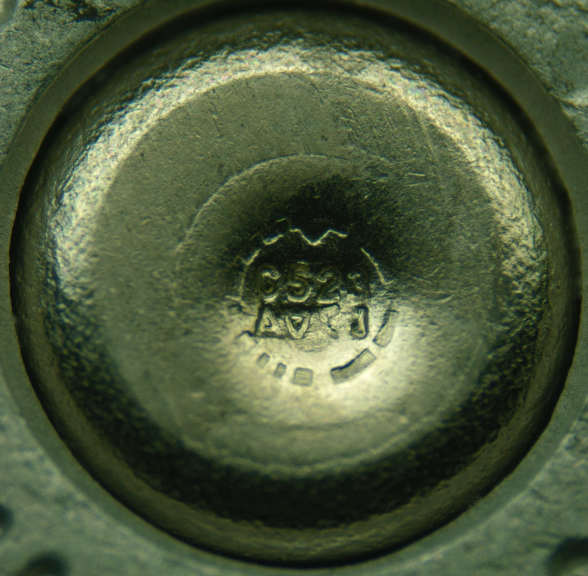On February 28, 2024, New Jersey Attorney General Matthew J. Platkin announced that “microstamping technology is a viable means of matching an expended cartridge case to the weapon from which it was discharged” — which could help law enforcement solve crimes where no firearm is recovered — after conducting a review that included live-fire testing. The attorney general’s report comes after the state enacted a law in 2022 to promote the adoption of microstamping-enabled firearms.
In essence, microstamping involves engraving a gun’s firing pin with unique identifying markings — including numbers, letters, or geometric shapes — linked to that specific firearm. When the gun fires, the firing pin impacts and imprints onto the cartridge case this unique code, allowing law enforcement to trace spent (fired) casings found at a crime scene back to the gun that fired them. In other words, with that information in hand, law enforcement can establish who purchased or owned the firearm used to commit a crime even if the gun itself is not recovered.
REPORT DETAILS
The attorney general’s report, available here, discusses how New Jersey’s Statewide Affirmative Firearms Enforcement (SAFE) Office obtained and tested a .45-caliber Colt pistol with a firing pin microstamped by TACLABS Inc., a company founded for that purpose by innovator Todd Lizotte. TACLABS had engraved the center of the gun’s firing pin with a set of eight alphanumeric characters and symbols as well as a circular geometric pattern known as a “gear code” to provide some redundancy “in the event that the engraving in its entirety did not impart as expected on any particular cartridge case.“
While TACLABS had already fired the pistol over 1,800 times during testing, SAFE examiners conducted their own evaluation, which involved firing the pistol 50 times and inspecting ten spent cartridge cases to see if the codes were legible “across a lengthy and varying firing sequence.” SAFE examiners found that identifiable information from the firing pin “transferred to every single cartridge case sample.”
The report also includes photos taken with a microscope of the spent cartridge casings, like the kind shown below, and notes that the U.S. Department of Justice found similar results in a peer-reviewed study testing three microstamping-enabled pistols back in 2012.

Ultimately, the report concludes that “microstamping-enabled firearms are technologically viable,” a major step toward New Jersey implementing a roster of approved microstamping-enabled firearms. As the attorney general’s office noted, “Once a firearm is approved for inclusion in the microstamping roster, New Jersey gun retailers will be required to make available for sale at least one gun from the roster.”
gun lobby opposition
While microstamping represents a huge leap forward for law enforcement investigations, the National Rifle Association and National Shooting Sports Foundation (NSSF), the gun industry’s trade association, have consistently railed against the technology. After the New Jersey attorney general release its report, the NRA called microstamping “a futile attempt” and “delusional concept of fighting crime,” alleging that the technology is still unproven and that criminals will simply file or scratch away a firing pin’s unique code — sentiments the organization has echoed in a so-called “fact sheet” on the topic.
The NSSF has published similar materials, and in a blog post, the organization’s senior vice president and general counsel, Larry Keane, has alleged that microstamping is “unworkable” and “raises serious concerns for firearm manufacturers.” According to Keane, the “cost of producing firearms that bear microstamping technology would increase by roughly $200. That’s a lot of money for a microscopic change.”
In that same blog post, Keane also claimed that microstamping is “not ready for prime time” and quoted from the same 2012 Department of Justice study referenced in the New Jersey attorney general’s report, which noted that “legitimate questions exist related to both the technical aspects, production costs, and database management associated with microstamping that should be addressed before wide scale implementation is legislatively mandated.”
But Keane failed to include the next sentence: “However, it should be noted that none of the above objections are inherently insurmountable.” Further, this decade-old DOJ study noted that “readable microstamping was achieved on most of the cartridge cases” across three different test pistols. The study also concluded that while microstamping was “not a perfect technology” a decade ago, it “does have the potential to place valuable information into the hands of the officer or detective at the scene of a crime in a timely fashion.”